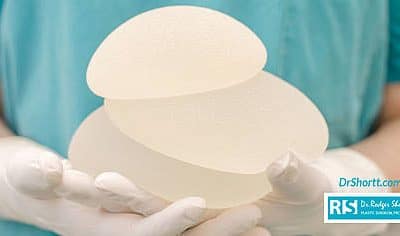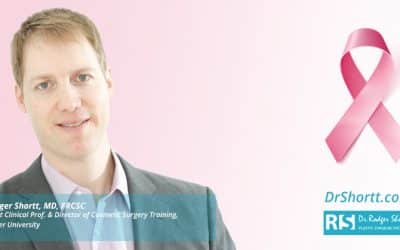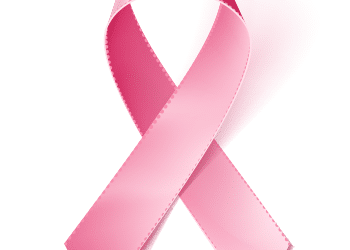Breast Reconstruction
REBUILD THE SHAPE, SYMMETRY AND SIZE OF YOUR BREASTS WITH BREAST RECONSTRUCTION.
Breast reconstruction is a surgical procedure often performed to rebuild the shape, symmetry and size of the breasts after surgery from breast cancer, including lumpectomy or mastectomy.
There may be several ways to reconstruct your breast. Dr Shortt will discuss the different options with you based on your own personal needs. In general, lumpectomy defects can often be corrected with a scar revision and fat transfer to the breast. For mastectomy defects the most common option is to use your own tissue or an implant. When your own tissue (flap) is used there are several options. However, the lower abdomen usually presents the best option for women that have had children. It provides the best natural feel and appearance to the breast. In this setting, Dr Shortt performs a DIEP flap that removes the lower abdominal skin and fat, but leaves all the muscles behind. Dr Shortt then performs microsurgery to reconnect the flap to a blood vessel in the chest. However, not everyone is suitable for this surgery, and options from your back and thighs may also be discussed.
Implant based reconstruction usually involves placement of a tissue expander either at the time of your mastectomy (immediate reconstruction) or sometime after. After the expander has reached its desired size, it is then exchanged for an implant, typically one that is tear drop shaped and made of cohesive gel silicone. This is the same type of implant used in breast augmentation. Nipple reconstruction is usually done 2-3 months after your breast mound is created with either your own tissue or a breast augmentation implant. Some refinements to perfect the shape, symmetry and size may also be done. This may include breast fat transfer. Finally, tattooing can be done to complete the cosmetic look.

This is not done by Dr Shortt, but he will refer you to experts in that field, should you wish. Balancing procedures can also be performed to the opposite breast. This typically includes a breast augmentation, breast lift (mastopexy), or breast reduction.
Breast reconstruction is customized for each patient, depending on their needs.
Breast reconstruction is extremely variable and highly tailored to each patient. It can be a transformative procedure that brings a sense of wholeness and self-esteem to patients. Many patients express tremendous gratitude for being made “complete” again. However, it is not for everyone. It can be an emotional ride, and not always straight forward. What is done for each patient really depends on the type of problem that needs correction.
Some of the common procedures include:
Use of a tissue expander to create more skin after a mastectomy
Use of a breast implant to provide volume after a mastectomy
Tissue from your abdomen, back or other part of the body to provide either skin, fat volume or both.
Fat which is liposuctioned and injected into the breast area to correct a lumpectomy defect, provide better concealment of a breast implant or tissue reconstruction (flap), or to increase volume of the breast
Rearrangement of breast tissue to fill a defect caused by lumpectomy, scarring or radiation.
Fat used to offset some of the damage caused by radiation, making the breast skin more suitable for reconstruction
Nipple reconstruction
Most patients would benefit from one or even several of the above options to create the most natural and beautiful breast reconstruction possible.
What about the opposite breast?
For patients that have a lumpectomy or a mastectomy on one side, often something needs to be done on the opposite side to achieve the best possible balance or symmetry. Although, the goal may be to achieve perfect symmetry, that is not realistic. However, reconstructive surgeons try very hard to get things as close as possible.
Common procedures for the opposite breast include a breast lift, breast reduction, and breast augmentation. In most cases, the surgery to bring the opposite breast into balance with the affected breast is covered by OHIP. A fee may apply, should a patient wish to enhance their breasts beyond just repair of a cancer deformity and the associated balancing. The most common situation would be a patient that desires a cosmetic breast augmentation. A portion of the surgery may be covered by OHIP, while a portion may be self-pay.
Breast reconstruction is customized for each patient, depending on their needs.
When to consider having this procedure?
In general, candidates for breast reconstruction surgery are in good health, are able to have general anaesthetic, and may have one or more of the following characteristics:
desire to rebuild the shape, symmetry and size of the breasts after surgery from breast cancer, including lumpectomy or mastectomy
may consider a breast implant or use their own tissue called a flap
consider breast fat transfer to shape or correct symmetry of the breasts, following breast reconstruction

What is the recovery time?
In general, the recovery time following a breast reconstruction is dependant on the type of procedure, but may take 1-2 and up to 6 weeks. As with any surgery under general anaesthetic, there are potential risks or complications to consider. During your private consultation, Dr Shortt will take a thorough medical history from you, discuss your surgical options, explain the complete procedure and potential risks, discuss what to expect pre and post breast augmentation surgery, and your estimated recovery time.
For additional information, Dr Shortt would direct you to the website where he did his fellowship training with world renowned breast and microsurgeon, Dr Edward Buchel.
Learn more about Breast Reconstruction in Dr Shortt’s Blog
The Longevity of Breast Implants: Do They Have To Be Replaced?
I see a lot of patients for breast surgery. It is a significant part of my practise. I do both cosmetic breast surgery and reconstructive breast surgery. One of the questions that I often get from both groups is how long will my implants last? I tell my patients that we really don’t know. In general, they are very robust.
Why I Love Speaking at BRA Day (Breast Reconstruction Awareness Day)
A couple of weeks ago I had the privilege of being an invited speaker at BRA Day 2016 (Breast Reconstruction Awareness Day) in Mississauga. This is the third year in a row that I have spoken at BRA day, and every year I just love it.
BRA DAY 2015: Promoting Education, Awareness and Access for Women About Breast Reconstruction
On Wednesday, October 14th, Dr Rodger Shortt presented at BRA Day (Breast Reconstruction Awareness) Day to a full house at the William Osler Hospital. He was one of 4 plastic surgeons from the GTA invited to present on the most up-to-date techniques in breast reconstruction.
Feel good, look great!
LET’S DISCUSS YOUR OPTIONS CONTACT US TODAY.



